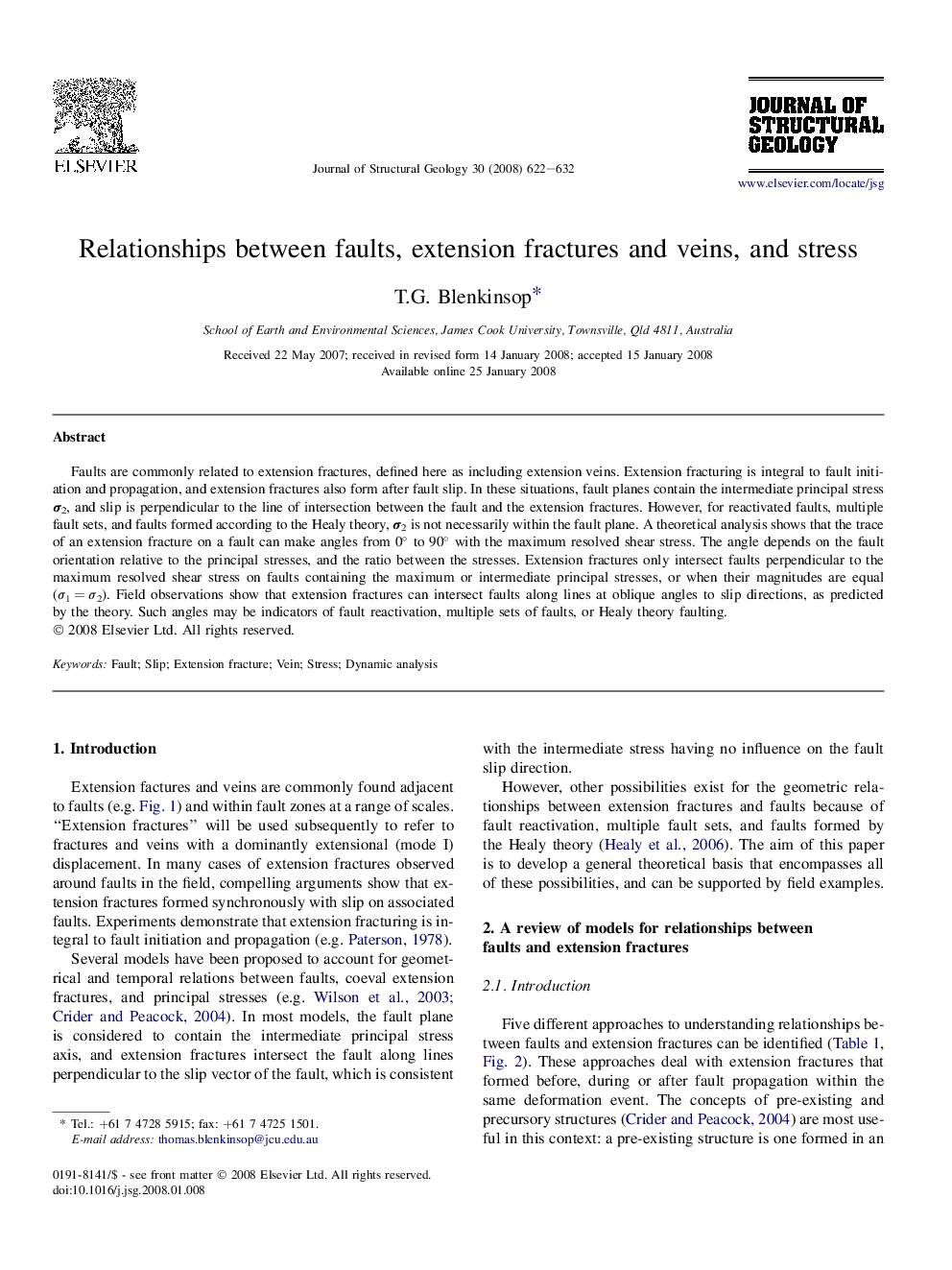| Article ID | Journal | Published Year | Pages | File Type |
|---|---|---|---|---|
| 4733753 | Journal of Structural Geology | 2008 | 11 Pages |
Faults are commonly related to extension fractures, defined here as including extension veins. Extension fracturing is integral to fault initiation and propagation, and extension fractures also form after fault slip. In these situations, fault planes contain the intermediate principal stress σ2, and slip is perpendicular to the line of intersection between the fault and the extension fractures. However, for reactivated faults, multiple fault sets, and faults formed according to the Healy theory, σ2 is not necessarily within the fault plane. A theoretical analysis shows that the trace of an extension fracture on a fault can make angles from 0° to 90° with the maximum resolved shear stress. The angle depends on the fault orientation relative to the principal stresses, and the ratio between the stresses. Extension fractures only intersect faults perpendicular to the maximum resolved shear stress on faults containing the maximum or intermediate principal stresses, or when their magnitudes are equal (σ1 = σ2). Field observations show that extension fractures can intersect faults along lines at oblique angles to slip directions, as predicted by the theory. Such angles may be indicators of fault reactivation, multiple sets of faults, or Healy theory faulting.
